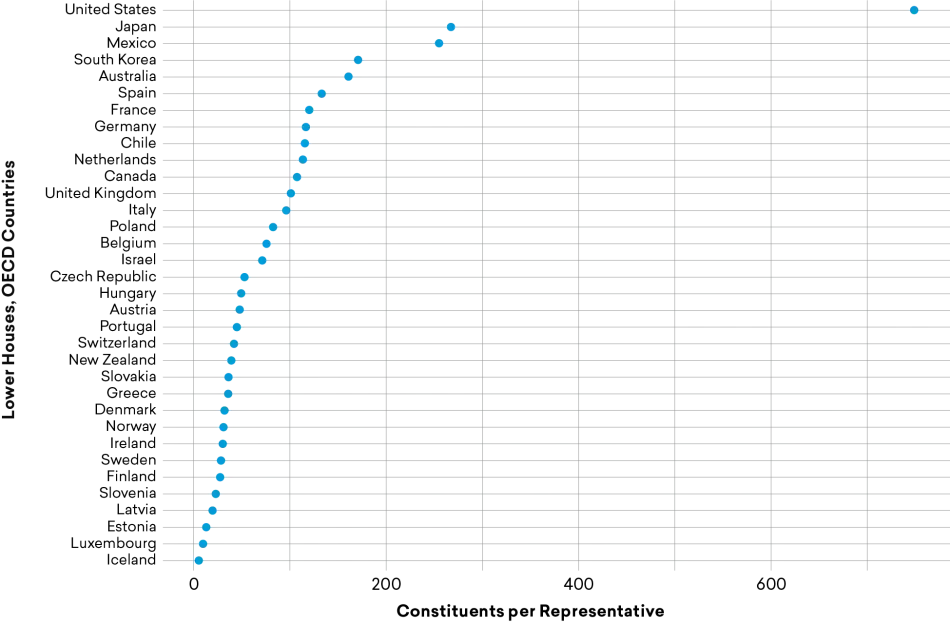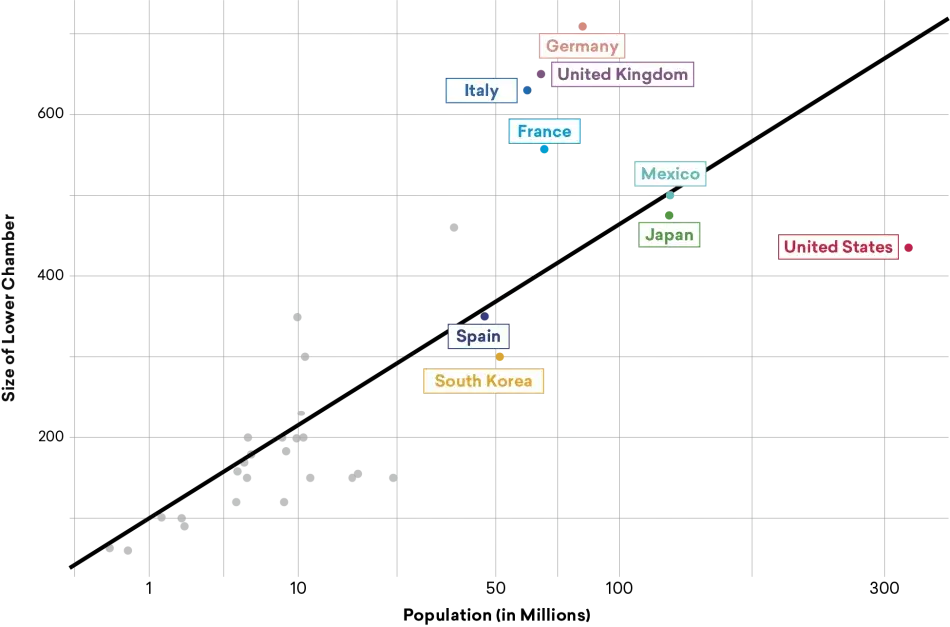The Case for Enlarging the House of Representatives
Part VI: International Comparisons
When it comes to House size, the United States is an outlier, with a ratio of 762,000 constituents per representative. In the United Kingdom (population sixty-six million), the House of Commons has 650 members, one for every 101,000 Brits. Germany’s Bundestag has 709 members, one for every 116,000 Germans. Among member countries of the Organisation for Economic Co-operation and Development (OECD), the country with the next-largest average district size is Japan, with roughly 270,000 citizens per representative.
Figure 6
Constituents per Representative in OECD Countries

Source: Data from the ACE Electoral Knowledge Network.
Certainly, the United States has a larger population than any other OECD country. And the more populous countries tend to have larger constituent-to-representative ratios. This is the cube root ratio discussed above. Remarkably, almost every other OECD country maps closely to its cube root prediction. The United States is again the outlier in having far fewer representatives than the cube root would suggest (692 House seats). Germany, by contrast, has more representatives than the cube root of its population.
In Figure 7, the black line represents a perfect one-to-one ratio between the cube root of a population and lower-legislative chamber size.
Figure 7
Cube Root Prediction and Lower-Legislative Chamber Size
The black line represents predicted chamber size based on the Cube Root Law; the United States has a very small lower house for such a populous nation

Note: X-axis is scaled by the cube root of the population. Source: Data from the ACE Electoral Knowledge Network.
Over time, democracies change the size of their lower houses, often in response to changing populations, though other considerations also drive change.49 Compare the United States with five other major Western democracies (Figure 8), all of which have changed the size of their lower legislative bodies over the last sixty years. While the United States is by far the most populous, it barely has more representatives than Canada, even though the United States has more than nine times as many residents (notably, the size of Canada’s House of Commons remains close to the cube root of the country’s population).
Figure 8
Size of Lower Houses in Populous Western Democracies
The United States is the only Western democracy that does not regularly adjust the size of its lower legislative chamber

Source: Data from Cory Struthers, Yuhui Li, and Matthew Shugart, “National and District Level Party Systems Datasets,” Harvard Dataverse, V2 (2018).

Endnotes
- 49Kristof Jacobs and Simon Otjes, “Explaining the Size of Assemblies: A Longitudinal Analysis of the Design and Reform of Assembly Sizes in Democracies around the World,” Electoral Studies 40 (2015): 280–292.
